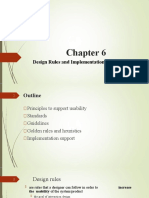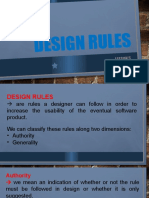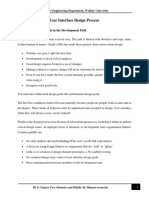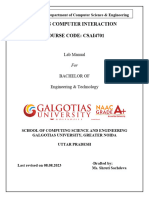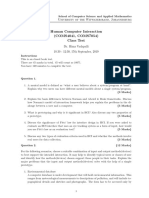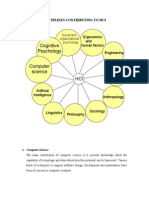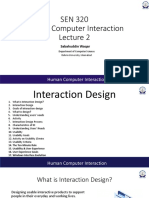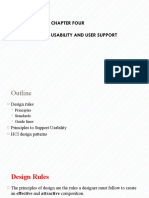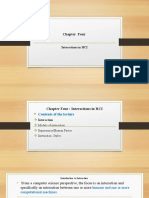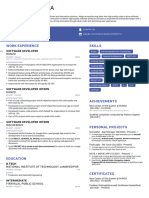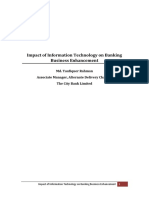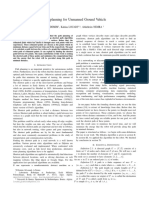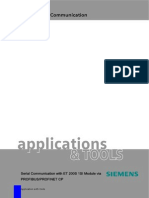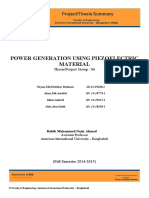0% found this document useful (0 votes)
539 views23 pagesLecture 6 - Design Rules and Implementation Support
The document discusses design rules and implementation support for universal design. It outlines universal design principles including equitable use, flexibility in use, and perceptible information. It then discusses three types of design rules: principles, standards, and guidelines. Principles of usability like learnability, flexibility and robustness are explained. Several standards and guidelines are also summarized, including Shneiderman's 8 Golden Rules and Norman's 7 Principles. Finally, human-computer interaction design patterns are introduced as a way to reuse knowledge about successful design solutions.
Uploaded by
mirkeabCopyright
© © All Rights Reserved
We take content rights seriously. If you suspect this is your content, claim it here.
Available Formats
Download as PPTX, PDF, TXT or read online on Scribd
0% found this document useful (0 votes)
539 views23 pagesLecture 6 - Design Rules and Implementation Support
The document discusses design rules and implementation support for universal design. It outlines universal design principles including equitable use, flexibility in use, and perceptible information. It then discusses three types of design rules: principles, standards, and guidelines. Principles of usability like learnability, flexibility and robustness are explained. Several standards and guidelines are also summarized, including Shneiderman's 8 Golden Rules and Norman's 7 Principles. Finally, human-computer interaction design patterns are introduced as a way to reuse knowledge about successful design solutions.
Uploaded by
mirkeabCopyright
© © All Rights Reserved
We take content rights seriously. If you suspect this is your content, claim it here.
Available Formats
Download as PPTX, PDF, TXT or read online on Scribd
/ 23
